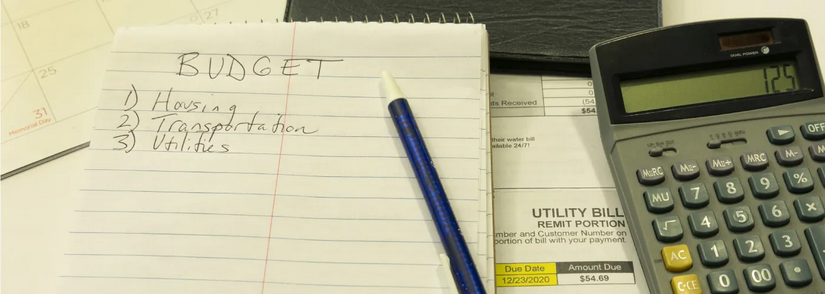Module 4: Finance (Chapter 4)
Section outline
-

The topic of money management is a broad and sometimes complex one. Ultimately, personal money management involves managing both our debt and also our savings and investments.
In 2021, the average American had consumer debt balance of $96,371. Nearly $100,000 per person. And less than 25% of Americans are debt free. Consumer debt can include mortgages, credit cards, as well as student loans. A key question all consumers should consider is how to manage debt and not become overburdened by it. The first step is to create a budget, which puts earnings into perspective, indicating what we can, and cannot, afford. A budget also entails setting aside certain funds for savings and investment, which help us achieve our short- and long-term goals.
Creating a budget requires an understanding of how money—debt and savings—works. Initially, percentages and interest need to be understood. They drive most of what happens with debt and savings. With that understanding, discussions of buying a house, a car, or incurring credit card debt can be addressed from a financial perspective. All the while, retirement is waiting. Preparing for retirement involves saving and saving earlier rather than later. The power of compound interest is on full display when saving early.
This chapter covers some of the basics of money management: percentages, interest, savings, investments, annuities, and loans.
Image Caption: Financial health helps you realize your goals. (credit: modification of work "Budget and Bills" by Alabama Extension/Flickr, Public Domain)
(Content & Source: Chapter 6 Introduction, Contemporary Mathematics, Donna Kirk, OpenStax, CC BY 4.0 License)
Upon completion of this module, you will be able to:4.1 Simple and Compound Interest- Calculate simple interest
- Calculate annual percentage rate
- Calculate compound interest
- Calculate annual percentage yield
4.2 Annuities- Find the future value of an annuity
- Find deposits needed to fund an annuity
- Find the interest earned
4.3 Payout Annuities- Find the present value of an annuity (principal required)
- Find the payments that can be made from a payout annuity
4.4 Loans- Find the amount of a loan given the payments
- Find the payments required given the loan amount
- Find the remaining balance of a loan
4.5 Multistage Finance Problems- Recognize the type of finance problem given a situation
- Breaking complex finance problems into smaller, simpler pieces
To achieve these objectives:- Read the Module 4 Introduction (see above)
- Read Sections 4.1 - 4.5 of Chapter 4: Finance in Finite Mathematics (links to each Section provided below)
- Watch the Videos provided in the Video Lessons pages for each Section (links provided below)
- Complete the MyOpenMath Homework Assignments for each Section (links provided below) - These are graded!
- Complete the MyOpenMath Quiz for Chapter 4 (link provided below) - This is graded!
- Once you complete the Quiz, upload your work in the Quiz Work Upload Assignment using the submission link below.
- Post in the Chapter 4 Q&A Discussion Forum - link provided below.
Note the check boxes to the right that help you track your progress: some are automatic, and some are manual.Module Pressbooks Resources and Activities
You will find the following resources and activities in this module at the Pressbooks website. Click on the links below to access or complete each item.
Background Colour
Font Face
Font Kerning
Font Size
Image Visibility
Letter Spacing
Line Height
Link Highlight
Text Colour
